Canine Dilated Cardiomyopathy
& Breeds at Risk
Research, Resources & Education
This website is based on research and is NOT created to diagnose your pet.
Each animal is an individual and may exhibit symptoms in a different way.
It is advised that you ALWAYS CHECK WITH YOUR VETERINARIAN for a proper diagnosis and treatment plan.
Table of Contents
Dilated Cardiomyopathy
DCM in dogs is a weakening of the heart muscles, leading to an inability of the heart to contract and pump blood efficiently.
Symptoms include Rapid breathing when resting or sleeping, Increased effort associated with breathing, Restless sleeping; moving around a lot and changing positions, Coughing or gagging, Weakness, Reduced ability to exercise, Collapse or fainting, Decreased appetite, Weight loss, Swollen belly, Depressed attitude or quiet and not interactiv, Sudden death
Treatments include Medication, removing excess fluids and/or for dogs with taurine or l-carnitine deficiencies, nutritional supplementation may be recommended.
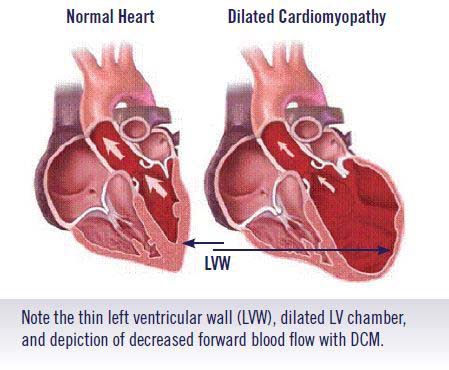
What Dogs are at Risk?
Some Dogs that are at Risk due to Genetic Predisposition



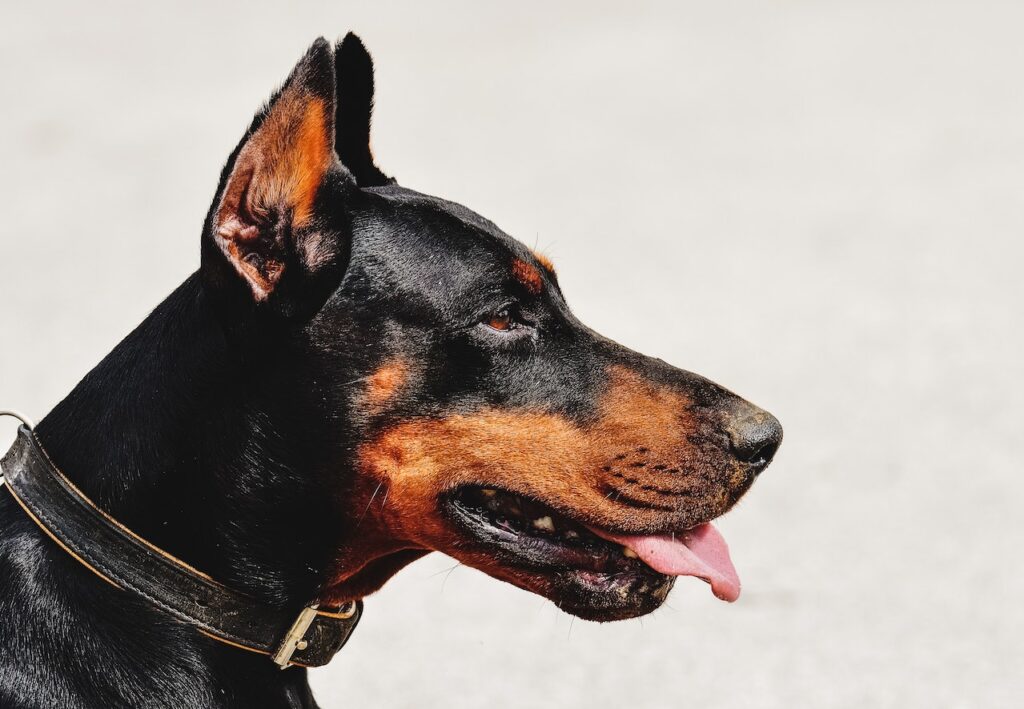





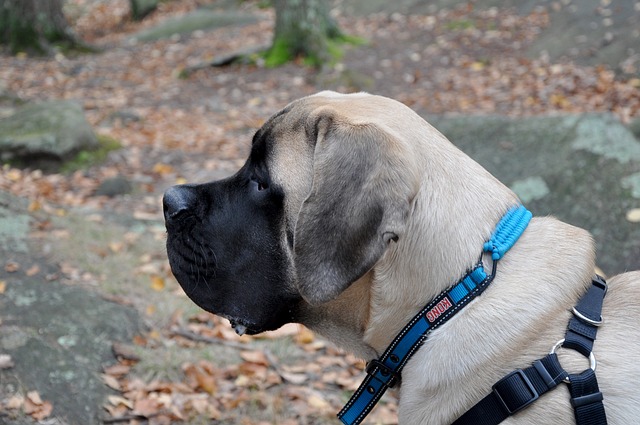
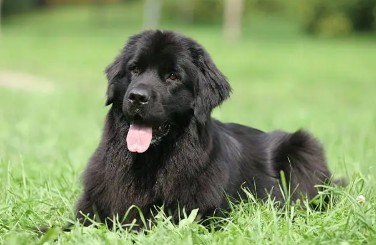
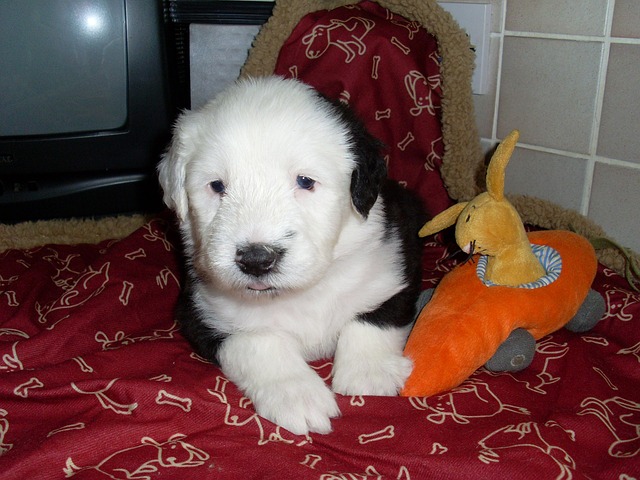

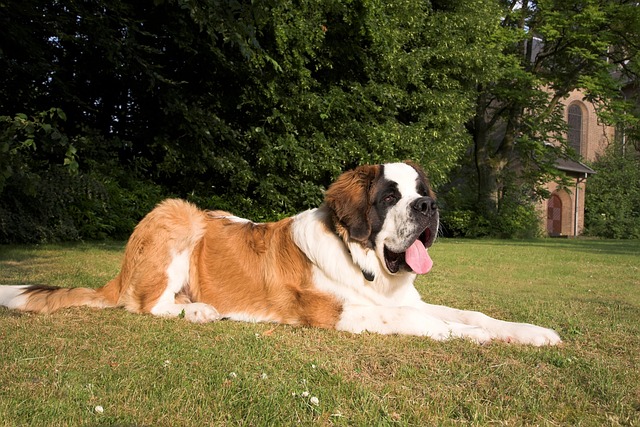


What is Dilated Cardiomyopathy ?
What is DCM in Dogs? (Daily Paws)
What is DCM in Dogs? Daily Paws
DCM in dogs is a weakening of the heart muscles, leading to an inability of the heart to contract and pump blood efficiently.
- Weak heart muscles also cause a thinning of the heart chamber walls and eventual heart chamber enlargement.
- When the heart cannot pump blood well, blood backs up in the heart, increasing blood pressure. Increased blood pressure damages the heart valves, which separate the heart chambers and keep blood flowing properly through the heart.
- DCM most commonly affects the left side of the heart, leading to a backup of blood in the lungs. The lungs’ blood vessels become leaky, causing pulmonary edema. Less commonly, DCM can affect the right side of the heart.
- DCM typically affects middle-aged and senior dogs and is most commonly seen in large and giant breed dogs.
Dilated Cardiomyopathy Videos
YouTube Videos that help explain Dilated Cardiomyopathy in Dogs
Disclaimer:
This is for research only and Lost Temple Pets does not endorse any video presented on this website.
It is advised that you ALWAYS CHECK WITH YOUR VETERINARIAN for a proper diagnosis and treatment plan.
Links Between Grain-Free Diets and DCM in Dogs
Links Between Grain-Free Diets and DCM in Dogs (AKC - American Kennel Club)
Links Between Grain-Free Diets and DCM in Dogs
Except from the American Kennel Club (see reference for complete article.)
At Tufts University, Dr. Lisa Freeman, DVM, PhD, DACVIM, a board-certified veterinary nutritionist with a research emphasis on nutritional effects of heart disease, was conferring with other veterinary cardiologists about the emerging link between DCM and grain-free diets. In July 2018, the Food and Drug Administration (FDA), acting on their advice, began an investigation.
From January 2018 through April 2019, the FDA received reports of 553 dogs with DCM, compared with previous years, in which reports received of dogs with DCM ranged from zero to three. These included 95 Goldens, 62 mixed-breed dogs, 47 Labrador Retrievers, 25 Great Danes, and more than 50 additional breeds with more than one report. The FDA found 16 dog food companies that had ten or more cases of DCM associated with their food. More than 90% of the diets were grain-free, and 93% of the diets contained peas or lentils. A far smaller proportion contained potatoes. But when these foods were tested, they contained the same average percentages of protein, fat, taurine, and taurine precursors as products containing grain.
In 2021, Dr. Freeman and fellow researchers published a study comparing diets associated with DCM and diets not associated with DCM. They found that the inclusion of peas not only represented the greatest difference between the two diets, but their results indicated that peas were also associated with higher and lower concentrations of certain compounds compared to the diets not associated with DCM. Right now, the relationship, if any, between these compounds and DCM is unknown. Future research may reveal more information.
Causes
Causes (WebMD)
What Causes DCM in Dogs? (WebMD)
It’s not fully clear why dogs get DCM, but a few factors probably play a role, including:
- In most cases, dilated cardiomyopathy in dogs is genetic and usually happens to certain breeds.
- Some breeds might have an inherited tendency to get DCM.
- Large and giant breeds are more likely to get DCM, especially Doberman pinschers, Boxers, and Great Danes.
- While DCM can happen in smaller breeds like cocker spaniels, it’s less common among them.
- Older dogs are also more likely to get DCM; it rarely happens in dogs under age 4.
- Some dogs with DCM don’t have enough of the amino acids taurine or l-carnitine. A deficiency can result if there’s not enough of these amino acids in the diet, or if your dog can’t absorb amino acids properly.
- There are also some reports of DCM in dogs who eat grain-free diets or foods with ingredients like:
- Peas
- Lentils
- Pulses or legume seeds
- Potatoes
- It’s not clear if or how these foods cause dilated cardiomyopathy, but research into the link is ongoing.
- Sometimes bacteria or another infection can lead to DCM.
- Parvovirus in puppies and some diseases like Chagas disease can cause heart problems, but this is rare.
- Some chemicals can damage the heart and lead to DCM.
- The most common toxin is an anti-cancer drug called doxorubicin.
- Some breeds might have an inherited tendency to get DCM.
Signs & Symptoms
What are the signs of DCM? (VCA Animal Hospital)
What are the signs of DCM? VCA Animal Hospital
Signs may be sudden or progressive in onset. Regular checkups with your veterinarian may lead to a diagnosis of heart problems before clinical signs are present (this is the best time to diagnose a problem).
Signs can include:
- Rapid breathing when resting or sleeping (more than 30-35 breaths per minute)
- Increased effort associated with breathing
- Restless sleeping; moving around a lot and changing positions
- Coughing or gagging
- Weakness
- Reduced ability to exercise
- Collapse or fainting
- Decreased appetite
- Weight loss
- Swollen belly
- Depressed attitude or quiet and not interactive
- Sudden death
Diagnosis and Testing
How is DCM diagnosed? (VCA Animal Hospital)
How is DCM diagnosed? VCA Animal Hospital
To diagnose dilated cardiomyopathy, your veterinarian must perform several tests on different aspects of heart function.
- Auscultation: Listening to the chest with a stethoscope allows your veterinarian to identify murmurs due to the improper closure of heart valves.
- The murmur’s location and intensity help determine its significance.
- Heart rhythm is also assessed during auscultation, and if there are concerns, your veterinarian may simultaneously palpate or feel the pulse to determine its strength and rhythm.
- Auscultation is also used to evaluate the lungs.
- Blood and urine tests: Liver and kidney function can be a concern because these organs are often impaired in heart disease.
- Cardiac biomarkers including Cardiac Troponin I and ProBNP:
- These blood tests measure specific protein levels in the body that change with structural changes of the heart and heart disease.
- The results of these tests must be assessed within the context of your pet’s condition.
- Chest radiographs (X-rays): Chest X-rays allow your veterinarian to examine the lungs and measure the size and shape of the heart.
- DCM usually causes obvious enlargement of the heart, particularly the left side.
- Electrocardiogram (ECG). This assessment is based on the electrical activity of the heart. It allows your veterinarian to accurately determine heart rate and to diagnose any abnormal rhythms.
- In some cases, a holter monitor (a portable ECG monitor your dog wears for 24 hours) can be used to better assess your dog for the presence of abnormal heart beats (arrhythmias).
- Ultrasound examination (echocardiogram). This procedure provides the most accurate determination of each heart chamber’s size and thickness of the heart walls.
- Measurements of heart contractions can be taken to evaluate the heart’s ability to pump blood effectively.
Can my dog be treated without these tests? (VCA Animal Hospital)
Can my dog be treated without these tests? VCA Animal Hospital
The combination of many of these tests gives your veterinarian the best evaluation of heart function.
- An accurate diagnosis provides a much better guide to the severity of the disease and the extent of treatment that is necessary.
- Treatment of the condition without proper diagnosis can potentially be fatal
Treatment
How to Treat DCM in Dogs (Daily Paws)
How to Treat DCM in Dogs – Daily Paws
Sadly, DCM is irreversible and incurable. Therefore, treatment is aimed at reducing symptoms and slowing disease progression. Your veterinarian will develop a personalized treatment plan according to your dog’s overall health and underlying health condition, if present.
- Removing excessive fluid is critical when treating DCM. Although diuretics are very effective, severe fluid buildup often requires periodic, manual fluid removal from the lungs (thoracocentesis) or abdomen (abdominocentesis).
- Various medications, such as angiotensin-converting enzyme inhibitors and anti-arrhythmia medications, help promote heart function and slow disease progression.
- For dogs with taurine or l-carnitine deficiencies, nutritional supplementation may be recommended. However, supplementation does not guarantee improvement of DCM symptoms.
- At home, you will need to monitor your dog’s symptoms. Contact your veterinarian if the symptoms worsen.
- Follow-up appointments are necessary to monitor your dog’s symptoms and response to treatment.
- Your veterinarian will perform X-rays, blood pressure testing, heart tests, and bloodwork during these appointments.
What is the treatment? (VCA Animal Hospital)
What is the treatment? VCA Animal Hospital
Several drugs are used to treat the symptoms of dilated cardiomyopathy. Initial stabilization depends upon the following:
- Pimobendan: This drug lowers the pressure in the arteries and veins and improves the heart muscle strength, thereby increasing blood flow to the body. Pimobendan does not appear to induce arrhythmias.
- Diuretics: These drugs stimulate the kidneys to remove excess fluid from the body. Furosemide and spironolactone are two commonly used diuretics for congestive heart failure.
- Angiotensin converting enzyme (ACE) inhibitors: ACE-inhibitors work by lowering blood pressure and reducing the afterload or resistance to blood flowing out of the heart. Enalapril and benazepril are commonly used ACE-inhibitors in dogs, although new ACE-inhibitors continue to be developed and may prove useful for treating dogs.
- Cardiac glycosides: These drugs improve heart function in several ways. They slow the heart rate and strengthen heart contractions, so the blood is pumped more effectively. Digoxin is the most common digitalis glycoside used in veterinary medicine. The dose must be closely regulated and monitored through routine blood tests and ECG analyses, due to the potential for toxic side effects. Digoxin use has mostly been replaced by pimobendan, except for cases with a specific arrhythmia called atrial fibrillation.
- Anti-arrhythmic drugs: Many dogs with DCM have arrhythmias. If arrhythmias are not controlled with the above medications, antiarrhythmic drugs may be added in cautiously.
- Two main classes are beta-blockers (such as atenolol, sotalol, carvedilol) and calcium-channel blockers (such as diltiazem).
- Other types of antiarrhythmic drugs used long term can include procainamide, mexiletine, and amiodarone.
References
References
American Kennel Club – Dilated Cardiomyopathy in Dogs: Closer to Solving the Mystery?
By Caroline Coile, PhD
Updated: Apr 16, 2024
https://www.akc.org/expert-advice/nutrition/dilated-cardiomyopathy-dogs-update/
Daily Paws – Everything You Need to Know About Dilated Cardiomyopathy (DCM) in Dogs
By JoAnna Pendergrass, DVM Published on September 28, 2022
https://www.dailypaws.com/dogs-puppies/health-care/dog-conditions/dcm-in-dogs
VCA Animal Hospital – Dilated Cardiomyopathy in Dogs
By Malcolm Weir, DVM, MSc, MPH; Ryan Llera, BSc, DVM; Ernest Ward, DVM
Print Vet Bio Print Article
https://vcahospitals.com/know-your-pet/dilated-cardiomyopathy-dcm-in-dogs–indepth
WebMD – What Is Dilated Cardiomyopathy (DCM) in Dogs?
Medically Reviewed by Jabeen Begum, MD on September 18, 2024Written by Cheryl Whitten
https://www.webmd.com/pets/dogs/what-is-dilated-cardiomyopathy-in-dogs
VIDEOS
Doberman Planet – Doberman Health Problem: Dilated Cardiomyopathy DCM
https://www.youtube.com/watch?v=P6tLhdvMNBs
Tran Tuan Tu – Dilated cardiomyopathy DCM causes, symptoms, diagnosis, treatment & pathology
https://www.youtube.com/watch?v=dMPUnvPgTVk
Veterinary Secrets – Dr. Andrew Jones Reviews FDA Study on Dog Food and Canine Dilated Cardiomyopathy
(CLICK on YouTube Video above)
Cardiac/Breed Chart
| BREED | Atrial septal defect (ASD) | Chronic mitral valvular disease (CMVDz) | Dilated cardiomyopathy (DCM) | Mitral valvular dysplasia (MVD) | Patent ductus arteriosus (PDA) | Pulmonic stenosis (PS) | Subaortic stenosis (SAS) | Tricuspid valvular dysplasia (TVD) | |
|---|---|---|---|---|---|---|---|---|---|
| Affenpinscher | Patent ductus arteriosus (PDA) | ||||||||
| Afghan Hound | Dilated cardiomyopathy (DCM) | Mitral valvular dysplasia (MVD) | |||||||
| Airedale Terrier | |||||||||
| Akita (American) | |||||||||
| Alaskan Malamute | |||||||||
| American Eskimo, Toy and Standard | |||||||||
| American Foxhound | |||||||||
| American Pitt Bull Terrier | |||||||||
| American Staffordshire Terrier | |||||||||
| American Water Spaniel | |||||||||
| Anatolian Shepherd Dog | |||||||||
| Australian Cattle Dog | |||||||||
| Australian Shepherd | |||||||||
| Australian Terrier | |||||||||
| Basenji | |||||||||
| Basset Hound | Pulmonic stenosis (PS) | ||||||||
| Beagle | Pulmonic stenosis (PS) | ||||||||
| Bearded Collie | |||||||||
| Beauceron | |||||||||
| Bedlington Terrier | |||||||||
| Belgian Groenendael | |||||||||
| Belgian Malinois | |||||||||
| Belgian Tervuren | |||||||||
| Bernese Mountain Dog | |||||||||
| Bichon Frise’ | Patent ductus arteriosus (PDA) | ||||||||
| Black and Tan Coonhound | |||||||||
| Black Russian Terrier | |||||||||
| Bloodhound | |||||||||
| Boerboel | |||||||||
| Border Collie | |||||||||
| Border Terrier | |||||||||
| Borzoi | |||||||||
| Boston Terrier | Pulmonic stenosis (PS) | ||||||||
| Bouvier des Flandres | Subaortic stenosis (SAS) | ||||||||
| Boxer | Atrial septal defect (ASD) | Dilated cardiomyopathy (DCM) | Pulmonic stenosis (PS) | Subaortic stenosis (SAS) | |||||
| Briard | |||||||||
| Brittany | |||||||||
| Brussels Griffon | |||||||||
| Bull Terrier | Mitral valvular dysplasia (MVD) | ||||||||
| Bull Terrier, Miniature | |||||||||
| Bulldog, English | Pulmonic stenosis (PS) | Subaortic stenosis (SAS) | |||||||
| Bullmastiff | |||||||||
| Cairn Terrier | |||||||||
| Canaan Dog | |||||||||
| Cane Corso (Italian Mastiff) | |||||||||
| Caucasian Shepherd | |||||||||
| Cavalier King Charles Spaniel | Chronic mitral valvular disease (CMVDz) | Patent ductus arteriosus (PDA) | |||||||
| Chesapeake Bay Retriever | |||||||||
| Chihuahua | Chronic mitral valvular disease (CMVDz) | Patent ductus arteriosus (PDA) | Pulmonic stenosis (PS) | ||||||
| Chinese Crested | |||||||||
| Chinese Shar-Pei | |||||||||
| Chow Chow | Pulmonic stenosis (PS) | ||||||||
| Clumber Spaniel | |||||||||
| Cocker Spaniel (American) | Chronic mitral valvular disease (CMVDz) | Dilated cardiomyopathy (DCM) | Patent ductus arteriosus (PDA) | Pulmonic stenosis (PS) | |||||
| Collie, Rough / Smooth Coat | Patent ductus arteriosus (PDA) | ||||||||
| Curly Coated Retriever | |||||||||
| Dachshund | Chronic mitral valvular disease (CMVDz) | ||||||||
| Dalmation | |||||||||
| Dandie Dinmont Terrier | |||||||||
| Doberman Pinscher | Atrial septal defect (ASD) | Dilated cardiomyopathy (DCM) | |||||||
| Dogo Argentino | |||||||||
| Dogue de Bordeaux (Mastiff) | |||||||||
| English Cocker Spaniel | Dilated cardiomyopathy (DCM) | Pulmonic stenosis (PS) | |||||||
| English Foxhound | |||||||||
| English Setter | |||||||||
| English Springer Spaniel | Dilated cardiomyopathy (DCM) | Patent ductus arteriosus (PDA) | |||||||
| English Toy Spaniel AKA King Charles Spaniel | |||||||||
| Field Spaniel | |||||||||
| Finnish Spitz | |||||||||
| Flat-Coated Retriever | |||||||||
| Fox Terrier, Smooth | |||||||||
| Fox Terrier, Toy | |||||||||
| Fox Terrier, Wire | Pulmonic stenosis (PS) | ||||||||
| French Bulldog | |||||||||
| German Pinscher | |||||||||
| German Shepherd | Dilated cardiomyopathy (DCM) | Mitral valvular dysplasia (MVD) | Patent ductus arteriosus (PDA) | Subaortic stenosis (SAS) | Tricuspid valvular dysplasia (TVD) | ||||
| German Shorthaired Pointer | Subaortic stenosis (SAS) | ||||||||
| German Wirehaired Pointer | |||||||||
| Glen of Imaal Terrier | |||||||||
| Golden Retriever | Dilated cardiomyopathy (DCM) | Subaortic stenosis (SAS) | |||||||
| Gordon Setter | |||||||||
| Great Dane | Dilated cardiomyopathy (DCM) | Mitral valvular dysplasia (MVD) | Subaortic stenosis (SAS) | Tricuspid valvular dysplasia (TVD) | |||||
| Great Pyrenees | |||||||||
| Greater Swiss Mountain Dog | |||||||||
| Greyhound | |||||||||
| Harrier | |||||||||
| Havanese | |||||||||
| Ibizan Hound | |||||||||
| Irish Setter | Tricuspid valvular dysplasia (TVD) | ||||||||
| Irish Terrier | Patent ductus arteriosus (PDA) | ||||||||
| Irish Water Spaniel | |||||||||
| Irish Wolfhound | Dilated cardiomyopathy (DCM) | ||||||||
| Italian Greyhound | |||||||||
| Japanese Chin | |||||||||
| Keeshond | Patent ductus arteriosus (PDA) | Pulmonic stenosis (PS) | |||||||
| Kerry Blue Terrier | Patent ductus arteriosus (PDA) | ||||||||
| Komondor | |||||||||
| Kuvasz | |||||||||
| Labrador Retriever | Dilated cardiomyopathy (DCM) | Patent ductus arteriosus (PDA) | Pulmonic stenosis (PS) | Tricuspid valvular dysplasia (TVD) | |||||
| Lakeland Terrier | |||||||||
| Lhasa Apso | Chronic mitral valvular disease (CMVDz) | ||||||||
| Lowchen | |||||||||
| Maltese | Chronic mitral valvular disease (CMVDz) | Patent ductus arteriosus (PDA) | |||||||
| Manchester Terrier Toy | |||||||||
| Manchester Terrier, Standard | |||||||||
| Mastiff, English | Dilated cardiomyopathy (DCM) | Pulmonic stenosis (PS) | |||||||
| Miniature Pincher | |||||||||
| Neapolitan Mastiff | |||||||||
| Newfoundland | Dilated cardiomyopathy (DCM) | Patent ductus arteriosus (PDA) | Pulmonic stenosis (PS) | Subaortic stenosis (SAS) | |||||
| Norfolk Terrier | |||||||||
| Norwegian Buhund | |||||||||
| Norwegian Elkhound | |||||||||
| Norwich Terrier | |||||||||
| Nova Scotia Duck Tolling Retriever | |||||||||
| Old English Sheepdog | Atrial septal defect (ASD) | Dilated cardiomyopathy (DCM) | Tricuspid valvular dysplasia (TVD) | ||||||
| Otterhound | |||||||||
| Papillon | Chronic mitral valvular disease (CMVDz) | ||||||||
| Parsons Russell Terrier | |||||||||
| Pekingese | Chronic mitral valvular disease (CMVDz) | ||||||||
| Petit Basset Griffon Vendeen (PBGV) | |||||||||
| Pharaoh Hound | |||||||||
| Plott Hound | |||||||||
| Pointer | Subaortic stenosis (SAS) | ||||||||
| Polish Lowland Sheepdog | |||||||||
| Pomeranian | Chronic mitral valvular disease (CMVDz) | Patent ductus arteriosus (PDA) | |||||||
| Poodle, Miniature | Chronic mitral valvular disease (CMVDz) | Patent ductus arteriosus (PDA) | |||||||
| Poodle, Standard | Atrial septal defect (ASD) | Patent ductus arteriosus (PDA) | |||||||
| Poodle, Toy | Chronic mitral valvular disease (CMVDz) | Patent ductus arteriosus (PDA) | |||||||
| Portuguese Water Dog | Dilated cardiomyopathy (DCM) | ||||||||
| Presa Canario | |||||||||
| Pug | |||||||||
| Puli | |||||||||
| Pyrenean Shepherd | |||||||||
| Rhodesian Ridgeback | |||||||||
| Rottweiler | Subaortic stenosis (SAS) | ||||||||
| Saluki | |||||||||
| Samoyed | Atrial septal defect (ASD) | Pulmonic stenosis (PS) | Subaortic stenosis (SAS) | ||||||
| Schipperke | |||||||||
| Schnauzer, Miniature | Chronic mitral valvular disease (CMVDz) | Pulmonic stenosis (PS) | |||||||
| Schnauzer, Giant | Pulmonic stenosis (PS) | ||||||||
| Schnauzer, Standard | |||||||||
| Scottish Deerhound | Dilated cardiomyopathy (DCM) | ||||||||
| Scottish Terrier | |||||||||
| Sealyham Terrier | |||||||||
| Shetland Sheepdog | Patent ductus arteriosus (PDA) | ||||||||
| Shiba Inu | |||||||||
| Shih Tzu | Chronic mitral valvular disease (CMVDz) | ||||||||
| Siberian Husky | |||||||||
| Silky Terrier | |||||||||
| Skye Terrier | |||||||||
| Soft-Coated Wheaten Terrier | |||||||||
| Spinone Italiano | |||||||||
| St. Bernard | Dilated cardiomyopathy (DCM) | ||||||||
| Staffordshire Bull Terrier | |||||||||
| Sussex Spaniel | |||||||||
| Swedish Vallhund | |||||||||
| Tibetan Mastiff | |||||||||
| Tibetan Spaniel | |||||||||
| Tibetan Terrier | |||||||||
| Tosa | |||||||||
| Vizsla | |||||||||
| Weimaraner | |||||||||
| Welsh Corgi, Cardigan | Patent ductus arteriosus (PDA) | ||||||||
| Welsh Corgi, Pembroke | Patent ductus arteriosus (PDA) | ||||||||
| Welsh Springer Spaniel | |||||||||
| Welsh Terrier | |||||||||
| West Highland White Terrier | Chronic mitral valvular disease (CMVDz) | Pulmonic stenosis (PS) | |||||||
| Whippet | |||||||||
| Wirehaired Pointing Griffon | |||||||||
| Yorkshire Terrier | Chronic mitral valvular disease (CMVDz) | Patent ductus arteriosus (PDA) | |||||||
| Spanish Mastiff | |||||||||
| Treeing Walker Coonhound | |||||||||
| Barbet | |||||||||
| Cirneco dell'Etna | |||||||||
| Broholmer | |||||||||
| Leonberger | |||||||||
| Rat Terrier | |||||||||
| Xoloitzcuintli | |||||||||
| Dutch Shepherd |